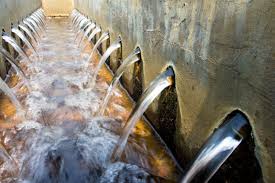
Mar 20, 2017
Industrial processes that leave behind toxic heavy metals in wastewater can be a significant environmental hazard. Heavy metals are often discharged by metal plating, metal cleaning and fabrication, battery manufacturing, chemical manufacturing, paint and pigment, and other industries. The treatment and removal of heavy metals have drawn scrutiny because of their association with various health problems.

Biophotonics: Technologies and Global Markets (PHO024B)

Global Trade: A Strategic Shift The global trade environment is undergoing a dra...

The global demand for cutting-edge materials continues to rise, and at the foref...

We are your trusted research partner, providing actionable insights and custom consulting across life sciences, advanced materials, and technology. Allow BCC Research to nurture your smartest business decisions today, tomorrow, and beyond.
Contact UsBCC Research provides objective, unbiased measurement and assessment of market opportunities with detailed market research reports. Our experienced industry analysts assess growth opportunities, market sizing, technologies, applications, supply chains and companies with the singular goal of helping you make informed business decisions, free of noise and hype.